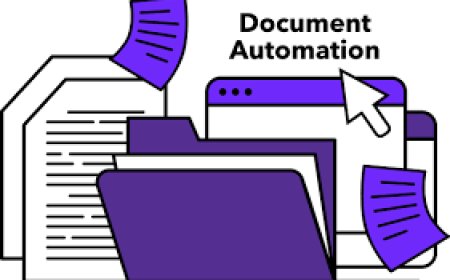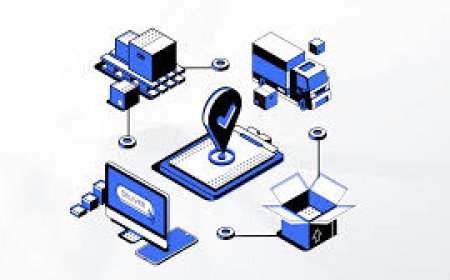Custom vs. Configurable: Partner Best Practices for Adapting Business Central to Your Workflow
This is where Microsoft Dynamics Business Central Partners play a pivotal role. These expert partners guide businesses through the nuanced choice between customization and configuration

In todays fast-paced business environment, companies seek enterprise resource planning (ERP) solutions that are not only powerful but also flexible enough to adapt to their unique workflows. Microsoft Dynamics 365 Business Central stands out as a comprehensive ERP platform designed for small and medium-sized businesses (SMBs). However, when it comes to tailoring Business Central to specific business needs, organizations often face a critical decision: should they pursue custom development or leverage the platforms configurable options?
This is where Microsoft Dynamics Business Central Partners play a pivotal role. These expert partners guide businesses through the nuanced choice between customization and configuration, ensuring the ERP solution aligns seamlessly with business processes while maintaining scalability, cost efficiency, and ease of maintenance.
In this article, we delve into the key differences between customization and configuration in Business Central, explore the best practices recommended by Microsoft Dynamics Business Central partners, and provide actionable insights to help businesses optimize their ERP deployment.
Understanding Customization vs. Configuration in Business Central
Before exploring best practices, its essential to understand what customization and configuration mean within the context of Business Central.
Configuration refers to the process of adjusting settings and parameters within the existing features of Business Central to meet specific business needs. This includes modifying user roles, setting up workflows, adjusting forms and reports, or enabling/disabling modules without altering the underlying codebase. Configuration is often preferred because it is supported by Microsoft and easily maintained through system updates.
Customization, on the other hand, involves changing the actual code or developing new functionality beyond what the out-of-the-box system offers. This can include creating custom extensions, integrating third-party applications, or developing bespoke modules tailored to unique processes. While customization allows for high levels of specificity, it carries risks such as increased complexity, maintenance challenges, and potential upgrade issues.
Why the Distinction Matters
Choosing between customization and configuration is more than a technical decision it impacts the total cost of ownership, system stability, and the agility of future improvements.
-
Cost and Time: Configurations are quicker and less expensive to implement since they use built-in tools. Customizations often require significant development resources.
-
Maintenance and Upgrades: Configurations align with Microsofts standard updates, minimizing disruption. Customizations may require additional testing and redevelopment with each new release.
-
Scalability and Flexibility: Excessive customization can limit a companys ability to adopt new features or pivot workflows, whereas configuration promotes agility.
Best Practices from Microsoft Dynamics Business Central Partners
Microsoft Dynamics Business Central partners bring extensive experience in navigating these challenges. Their best practices focus on balancing customization with configuration to deliver tailored yet maintainable solutions.
1. Start with a Thorough Business Process Analysis
Partner-led implementations always begin with a deep dive into the customers workflows, pain points, and growth plans. Understanding which processes are standard and which require unique handling helps partners recommend the right balance.
For example, many financial and inventory management processes fit well within Business Centrals configurable framework. But if a company has proprietary manufacturing steps, custom development might be warranted for those areas only.
2. Maximize Out-of-the-Box Features First
Experienced partners emphasize fully exploring Business Centrals native features before considering customization. This approach minimizes complexity and leverages Microsofts ongoing investments in improving core capabilities.
By configuring roles, permissions, workflows, and reports, businesses often find that many needs are met without altering the codebase.
3. Use Extensions Instead of Modifying Base Code
When customization is necessary, Microsoft Dynamics Business Central partners advocate using extensions modular packages that add functionality without changing the core system.
Extensions keep custom code separate and sandboxed, making upgrades smoother and reducing risks of breaking changes. This practice follows Microsofts AppSource model, enabling easier deployment and support.
4. Document and Standardize Customizations
To avoid the common pitfalls of custom code, partners recommend rigorous documentation of any customizations. Clear documentation supports better knowledge transfer, debugging, and future enhancements.
Furthermore, standardizing custom development by adopting coding best practices and adhering to Microsofts AL language guidelines ensures consistency and quality.
5. Implement Governance and Change Management
Partner guidance often includes establishing governance frameworks for managing configurations and customizations. This involves defining who can make changes, setting up testing environments, and ensuring thorough user acceptance testing before deployment.
A controlled approach reduces the chance of unauthorized or conflicting modifications that could disrupt workflows.
6. Plan for Future Upgrades and Scalability
A key consideration is the impact of customizations on future Business Central upgrades. Partners advise designing custom solutions with upgradeability in mind and avoiding deep modifications that might be costly to maintain.
They also recommend leveraging Microsofts roadmap and preview environments to test new releases early, ensuring custom features remain compatible.
7. Leverage Partner Expertise for Integration
Many businesses need to integrate Business Central with other line-of-business applications such as CRM, eCommerce platforms, or third-party logistics systems. Microsoft Dynamics Business Central partners bring the technical skills to develop scalable integrations using APIs and connectors, typically through extensions rather than core code changes.
This approach preserves system integrity and offers more flexible workflows.
Case Study: Balancing Configuration and Customization for a Retail Client
A mid-sized retail chain partnered with a certified Microsoft Dynamics Business Central partner to implement Business Central. Initially, the partner analyzed their existing workflows and identified that 85% of the processes could be configured using out-of-the-box features such as inventory management, sales orders, and financial reporting.
However, the client required a unique pricing engine that factored in complex regional discounts and promotions, a process not natively supported. The partner developed a custom extension that seamlessly integrated with Business Centrals sales module.
By limiting custom development to just one extension and maximizing configuration elsewhere, the retail chain achieved a faster deployment, reduced costs, and ensured ongoing compatibility with future Microsoft updates.
Avoiding Common Pitfalls
While customization offers flexibility, businesses must avoid pitfalls such as:
-
Over-Customization: Trying to change too much at once can lead to an unmanageable system.
-
Ignoring Upgrades: Failing to test custom code against new versions may cause operational disruptions.
-
Lack of Documentation: Poorly documented changes lead to costly troubleshooting.
-
Neglecting User Training: Even the best system fails without proper user adoption.
Microsoft Dynamics Business Central partners help mitigate these risks through structured project management and ongoing support.
Conclusion: A Balanced Approach is the Key
Adapting Business Central to your business workflow is a journey that requires strategic decisions around customization and configuration. Leveraging the expertise of Microsoft Dynamics Business Central partners ensures this journey is successful.
By thoroughly understanding your business processes, prioritizing out-of-the-box configurations, employing extensions for custom needs, and planning for scalability and maintenance, your ERP system can deliver maximum value without becoming a technical burden.
Whether you are a growing SMB or an established enterprise, partnering with experienced Business Central experts allows you to strike the perfect balance between custom functionality and configurable flexibilityempowering your organization to innovate and scale confidently.








&srotate=0)




























